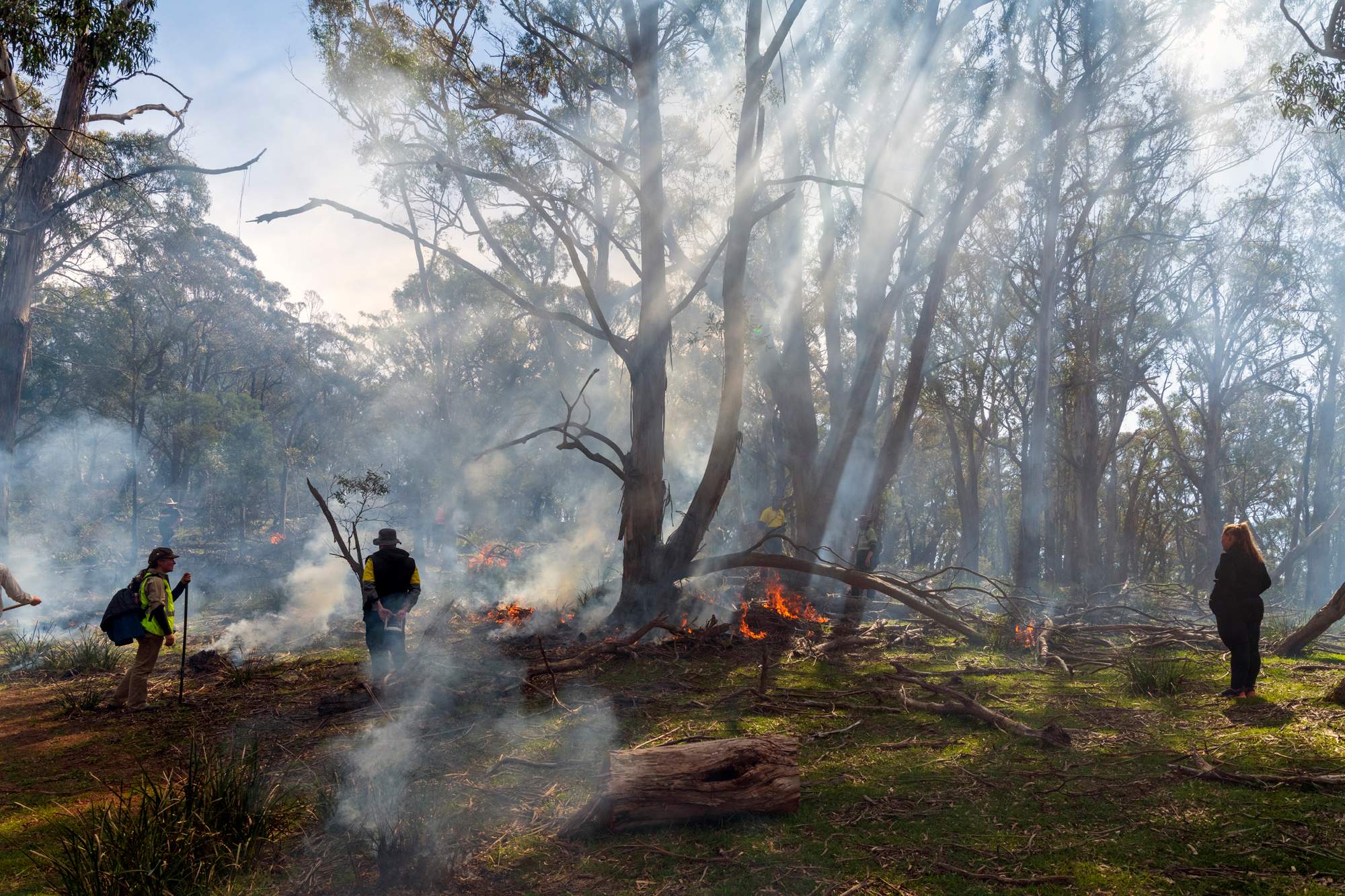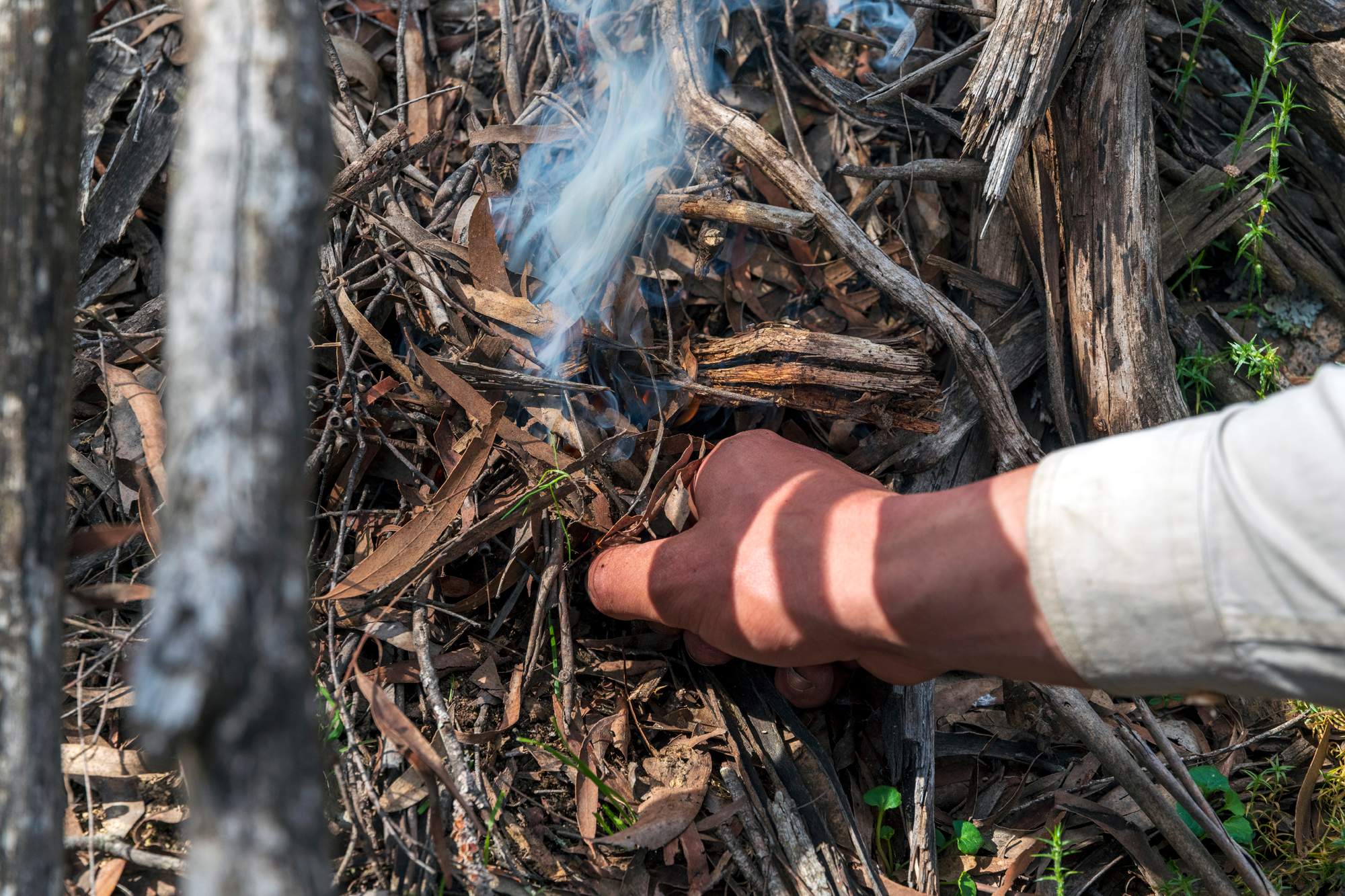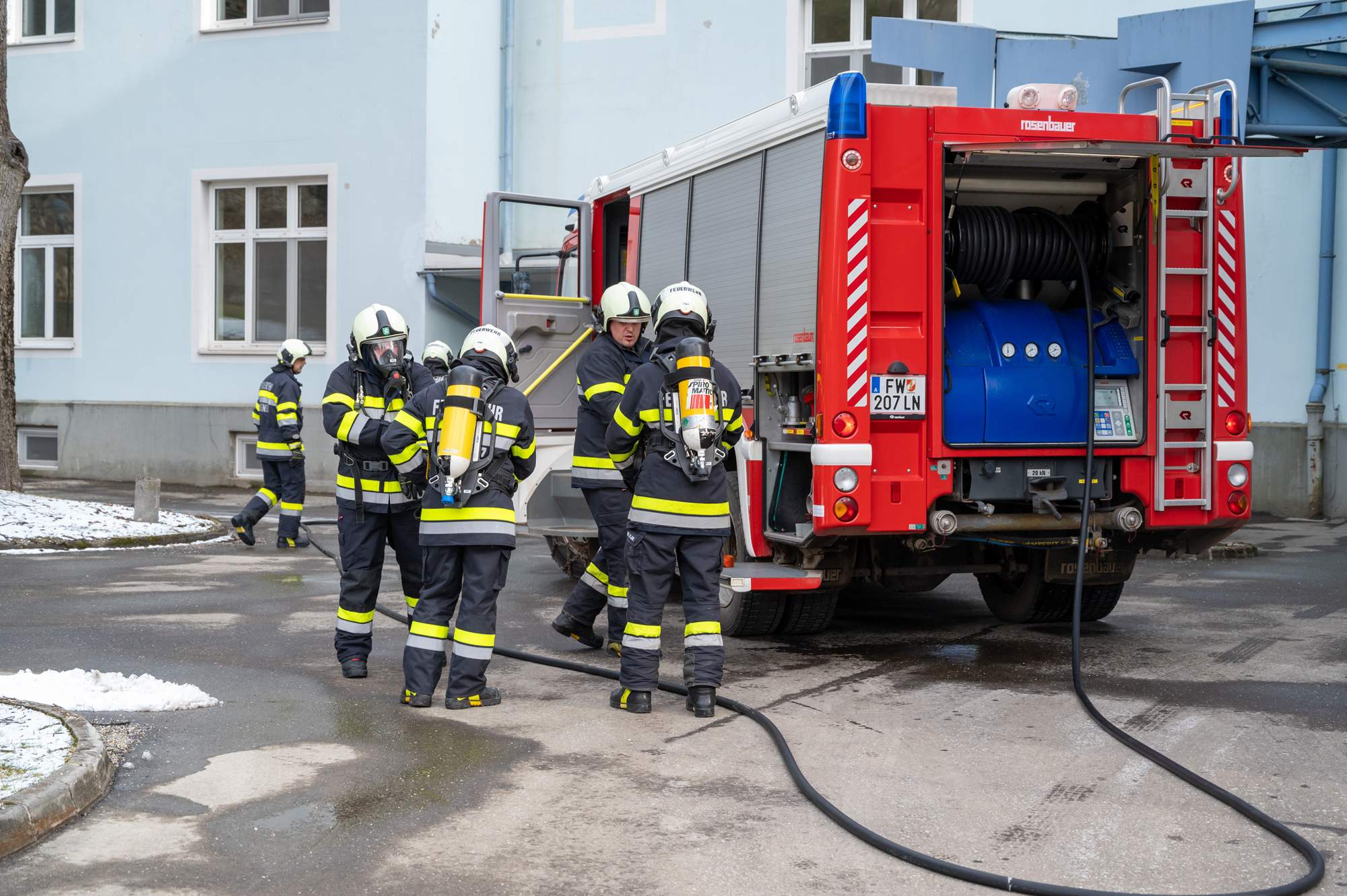Disaster management / Global
Preparing for the worst
Whether you’re faced with an accident, a fire or a less expected natural catastrophe, it pays to have a plan. Meet the experts who are laying the groundwork to keep us safe and sound.
Fight fire with fire
The return of indigenous Australian methods
The sound of dry twigs crackling underfoot is the quintessence of the Australian bush. “We call this sick country,” says indigenous-burning practitioner Den Barber. “It hasn’t been cleared for 50 years so everything is a fuel source. If a fire comes through, it will burn hot and hard.” Barber is leading a group of landowners, academics and firefighters through a weekend workshop on a sprawling private property outside Canberra to learn about indigenous burning, a method practised for thousands of years by Aboriginal Australians.


The 2019-2020 bushfire season destroyed about 3,000 homes, leaving Australians fearing that bushfires will be more frequent and devastating. While the country has satellites and thermal readers, many are seeking alternative ways to mitigate the threat. After reaching the burn site, Barber instructs students to fan out, light a fire with a match, stand back and watch. “The first time I did this, I watched as birds swooped in and small animals left the zone; there were people everywhere,” he says. An indigenous man and former fireman, he realised at that moment that he wanted to shift gears. His organisation, Koori Country Firesticks, is one of a growing number that conduct such burns for landowners. Burns are conducted in a mosaic pattern so that a fire goes out when it hits a burnt patch.
Barber says that he once faced scepticism over indigenous-burning’s efficacy from official quarters but some state governments are now listening. Western Australia has hired a full-time indigenous burning co-ordinator; officials from Victoria say that there is a need to harness the knowledge. The 2021 fire season is predicted to be different: a forecasted La Niña weather pattern will bring more rain and cooler temperatures but also a greater risk of fast-spreading grass fires.

Research on the technical aspects of firefighting continues. Australia’s national science agency, CSIRO, has built a wind tunnel where researchers can light fires to improve their understanding of flame behaviour. “The last fire season got the creative juices flowing,” says CSIRO’s lead bushfire researcher Dr Andrew Sullivan. “But, of course, it’s about making them work.”
“This is about constant maintenance,” says workshop attendee Jim Osborne, a landowner from near the New South Wales-Victoria border whose land was badly burned. “That’s something that I’m now going to commit to.”
All systems go
An Austrian town prepares for worst-case scenarios
In the former Austrian mining town of Eisenerz, epidemics and other calamities strike with alarming regularity. That’s not because this town of 3,800 people in the picturesque state of Styria is fatally unlucky; it’s because Eisenerz is a hotspot for disaster-simulation exercises. In 2018, when its only hospital shut down, state authorities decided to repurpose it for emergency preparedness training. This became the foundation of Sim Campus, a sprawling complex designed to simulate all manner of accidents and catastrophes, both natural and man-made.


It’s this versatility that makes it unique. While most other such facilities are dedicated to a specific simulation scenario, Sim Campus specialises in “full process simulation, all in one place”, says Benjamin Roszipal, head of the Institute for Emergency Simulation. “For example, it could be the entire path of a patient, from the site of the accident to the patient’s transportation to an intensive-care unit.” The campus is scheduled for completion in 2025 and plans include a “tactical district”, comprising residential areas and key infrastructure, such as a school, bank and petrol station, as well as a “destroyed district” for search-and-rescue training.
There is some irony in the fact that residents now have to travel to the next town for hospital treatment. But the new campus has proven popular for the economic benefits it has brought to a region that has seen its population dwindle since iron mining came to an end. “The possibilities that arise from using the existing vacant infrastructure – empty factories, abandoned districts – can be seen as an advantage for Eisenerz,” says town mayor Thomas Rauninger.
Sim Campus is fully funded by the state of Styria. “It’s about exchange: we want people and institutions to tell us what sort of training they want to have,” says Roszipal. “And we will give them the opportunity to train here.”
Photographers: Lee Grant, Markus Wasmayer


